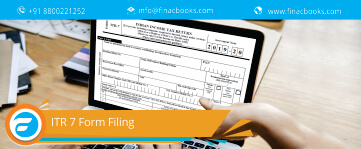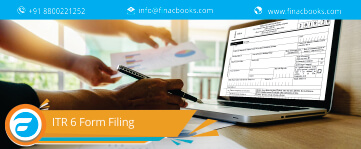What is E-Invoicing?
E-invoicing is a new system started by the GST department of central government for electronic authentication of B2B invoices through GST network. Under this new electronic invoicing system, one identification number is allotted by invoice registration portal to each invoice which is managed by GST network (GSTIN). This electronic system updates the invoicing information in real time to both GST & E-way bill portal.
Direct transfer of invoice information from invoice registration portal to GST portal eliminates the manual data filing system of invoices along with ANS1/GST returns and generation of PART-A of the e-way bills. From 1st April 2020, it is mandatory for GST registered persons having an -
- Aggregate turnover of more than 100 crores to follow this new electronic invoice system.
- Aggregate turnover of more than 500 crores must have QR code mentioned on B2C invoices.

What are the benefits of Electronic Invoicing?
There are many ways in which electronic invoicing benefits GST registered users –
Role of E-invoicing Portal
There are various roles performed by e-invoicing portal which are as follows –
- Digitally signing of invoices
- Allotment of unique reference number to each invoice
- QR code generation
- Sending of signed e-invoice to the document recipient on the e-mail mentioned on the invoice.
What is QR Code?
QR code is used for quick viewing, validation, accessing of invoices from GST system. QR code is generated by invoice registration portal after uploading the JSON format of invoices.
QR code consists of the following e-invoicing parameters –
Procedure of Generating E-Invoice under GST
The procedure of generating E-invoice under GST is as follows –
Step 1 – Generation of Invoice & JSON Format
Step 2 – Uploading of JSON
Step 3 – IRP Data Validation
Step 4 - E-invoicing Sharing
Step 5 – Returning of Digitally Signed Copy
Modes of generation of E-invoice under GST
There are various modes of generation of E-invoice available with the taxpayer so that taxpayer can use the best mode as per his/her suitability. The various modes available under the proposed system for E-invoicing through invoice registration portal are as follows –
Mandatory fields of E-Invoicing under GST
E-invoicing should be done as per GST invoicing rules. Certain fields are indicated mandatory and some are optional for the businesses but users can choose to fill the mandatory fields only. The sections & fields of E-Invoice are differentiated between mandatory & optional fields which are as follows –
- 18 sections (8 Mandatory, 10 Optional)
- Out of 8 mandatory sections, 34 are mandatory fields whereas 46 are optional
- Out of 10 optional sections, 35 are optional fields whereas 17 are mandatory
The field names which are mandatory or compulsorily to be filled are invoice type, invoice type code, supplier GSTIN, invoice number, invoice date, preceding invoice reference, GSTIN, reverse charge, place, pin code, state code, unique identification number, supply type, Shipping To_GSTIN, Shipping To_State, transaction mode, quantity, item description, rate, Assessable value, IGST value, CGST value, SGST value, Total invoice value.
How will E-Invoicing Curb Tax Evasion?
It helps in curbing tax evasion in the following ways –
- Direct access to the transactions in real time for the tax authorities as it is mandatory to generate e-invoice through GST portal.
- Less scope for invoice manipulation as invoice generation takes place before carrying out transaction.
- Reduction in counterfeit GST invoices.
- Claiming of genuine input tax credit through GST portal.
- Easy GSTN tracking to identify fake tax credit claim by matching input tax credit with output tax details.











